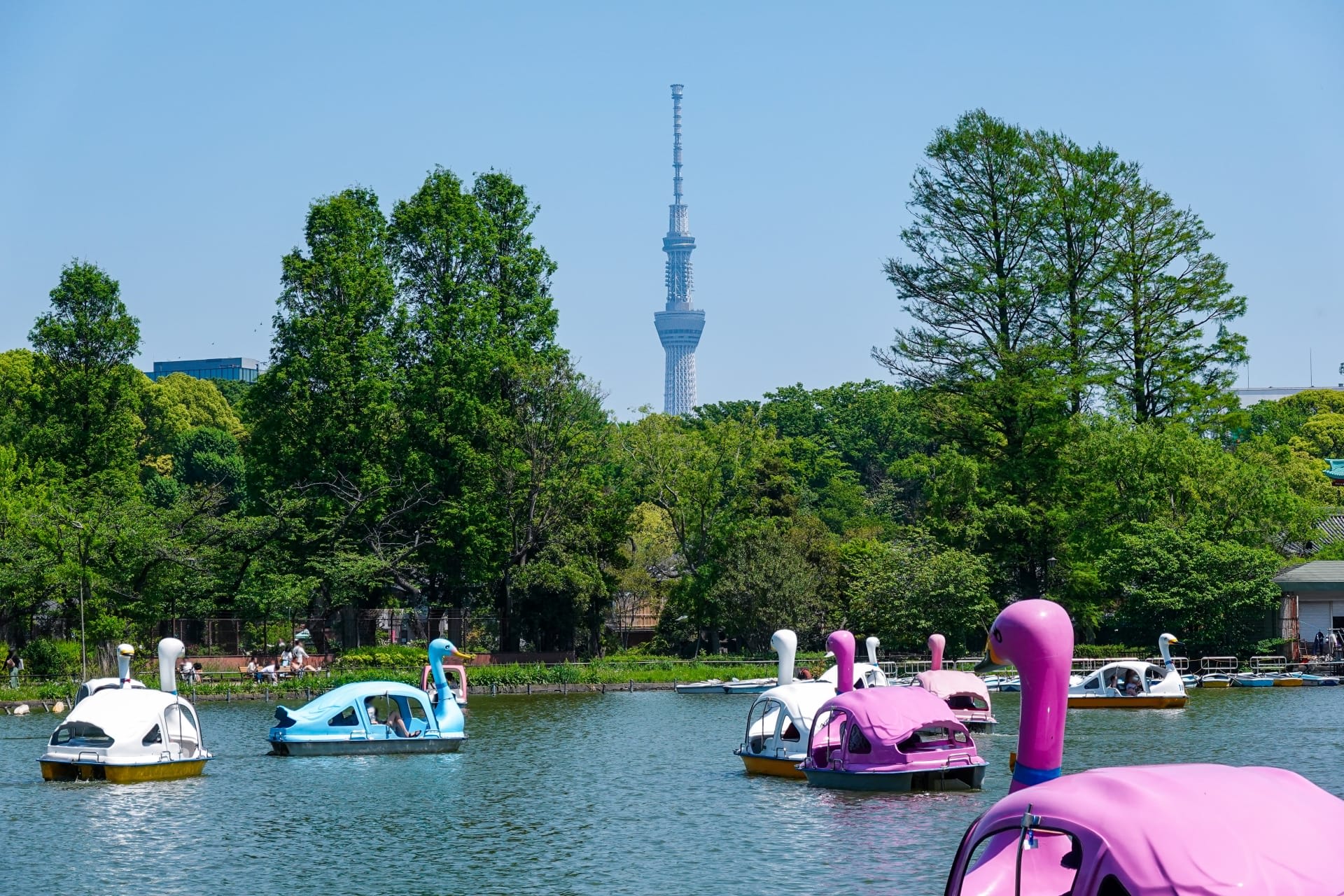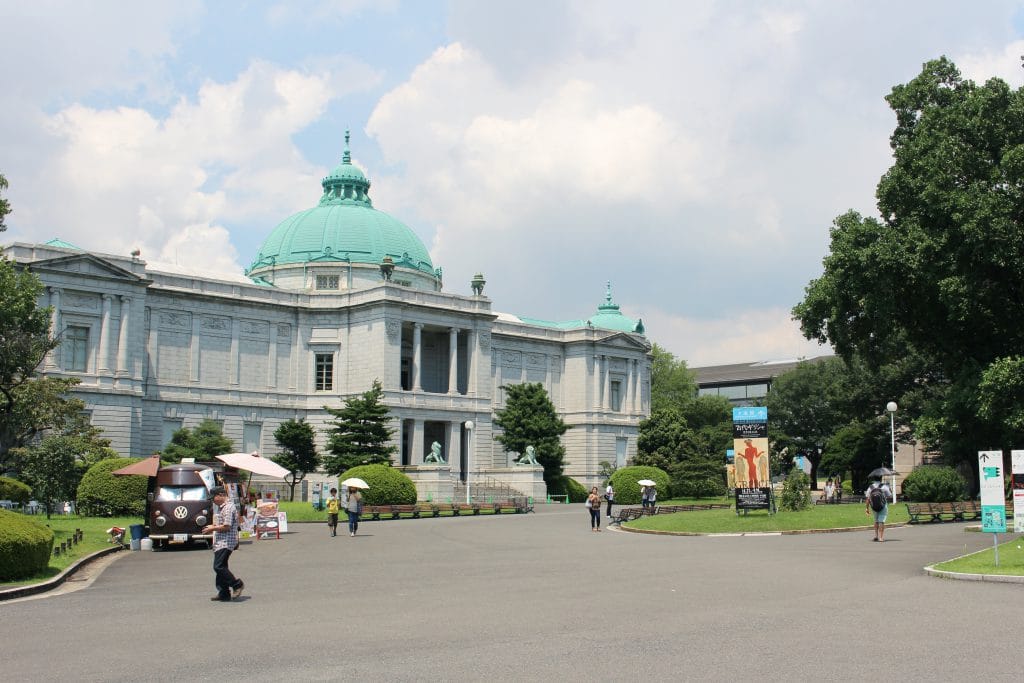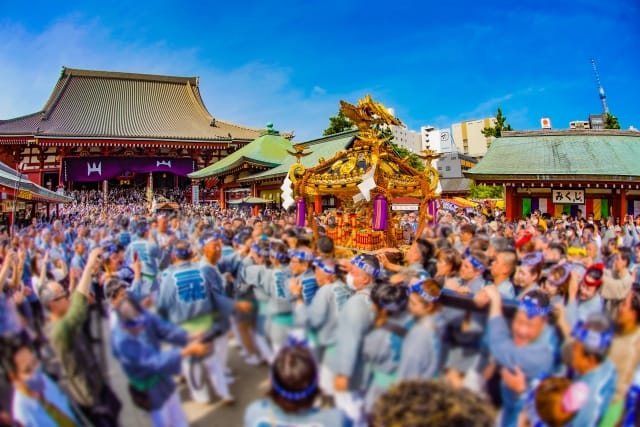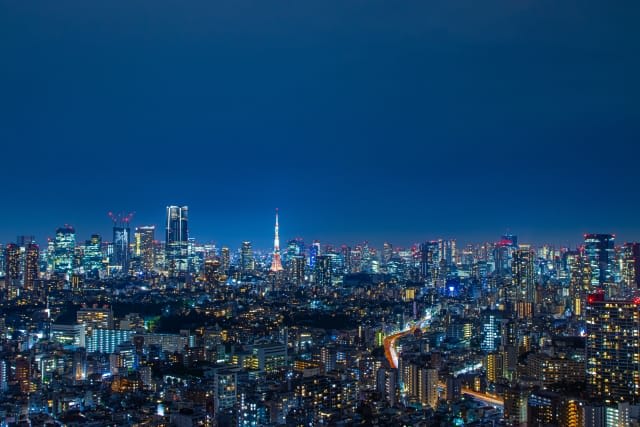Discover Ueno in Half a Day: 3 Best Itineraries
Ueno is one of my favorite neighborhoods in Tokyo, where I always enjoy bar hopping whenever I visit Tokyo.I updated this article in January 2026 to incorporate my findings from the experience, along with the latest information for 2026.
Another reason for updating the article is the growing interest in tours that allow visitors to safely and deeply experience Ueno's nightlife. With countless izakaya (Japanese pubs) packed into Ueno, tourists visiting for the first time find it extremely difficult to discover the truly excellent spots beloved by locals.
This is why food tours led by knowledgeable local guides who know Ueno inside and out have been gaining popularity, as they take visitors through Ueno's maze of izakaya establishments.
In fact, Magical Trip's tour, which ranked #1 among all tours on Tripadvisor, has been receiving numerous applications.

If you want to experience truly local-favorite izakayas in Ueno, one of Tokyo's premier drinking districts, join the "All-You-Can-Drink Bar Hopping Tour in Ueno." Not only will you discover hidden gems that tourists rarely find, but you'll also experience the Japanese culture of "shime" (end-of-night ritual).
For those who love retro neighborhoods, we also recommend the "Yanaka Historical Walking Tour in Tokyo's Old Town," which takes you through Yanaka, Ueno's neighboring district, with a local guide. It's an efficient and immersive way to enjoy this deeply traditional and historic area of Yanaka.
We hope you'll have a wonderful time experiencing everything Ueno has to offer by joining a Magical Trip tour!
Introduction
I first visited Ueno shortly after moving to Tokyo. At the time, I was skeptical about whether I could fully appreciate Ueno's charm in just half a day. However, once I actually walked around, those doubts were quickly dispelled.
Ueno is a place that can be described as a microcosm of Tokyo's culture. Rich nature, world-class museums, the atmosphere of traditional neighborhoods, and vibrant shopping streets are all surprisingly compact.
In this article, based on my experience, I'll introduce three half-day courses that maximize Ueno's appeal. I've prepared plans tailored to the needs of those who want to immerse themselves in culture, enjoy nature, and experience the atmosphere of old Tokyo.
After experiencing world-famous museums and art, you can immediately stroll through the lush green park next door. Then, just a few minutes' walk away, you can feel the local atmosphere in the bustling Ameyoko. I'll introduce courses that allow you to efficiently and deeply enjoy this unique charm.
Table of Contents
・Can Ueno Be Enjoyed in Half a Day?
・Access to the Ueno Area
・Model Course 1: Interact with Nature and Animals in Ueno
・Model Course 2: Cultural and Artistic Tour of Ueno
・Model Course 3: Experience the Ueno Area and Old Tokyo Streets
・Recommended Spots in and Around Ueno After Your Half-Day Trip
・Recommended Tours in Ueno
Once you have made daytime plans for sightseeing in Ueno , the next step is to make plans to enjoy Ueno's nightlife to the fullest! There are many nightlife spots in Ueno, like bar hopping at Ameyoko.
Please enjoy Ueno efficiently based on the guide to nightlife spots carefully selected by the author, who lives in Tokyo.

Can Ueno Be Enjoyed in Half a Day?
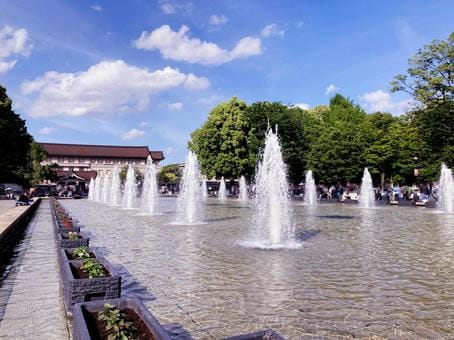
Ueno is home to a concentration of world-famous museums and art galleries. There are plenty of spots to satisfy cultural interests, such as the Tokyo National Museum, National Museum of Nature and Science, and National Museum of Western Art.
Also, places to enjoy nature, such as Ueno Zoo and Ueno Park, are in the same area.
Furthermore, in vibrant shopping streets like Ameyoko, you can enjoy delicious cuisine.
The transportation is also very convenient, with easy access from JR and subway stations to each spot. These elements combine to allow you to experience Ueno's charm sufficiently in just half a day.
From my experience, I can say that Ueno can be thoroughly enjoyed in half a day. Of course, there might not be enough time to see everything.
However, by efficiently touring the main spots, I believe you can grasp the essence of Ueno's charm.
Access to the Ueno Area
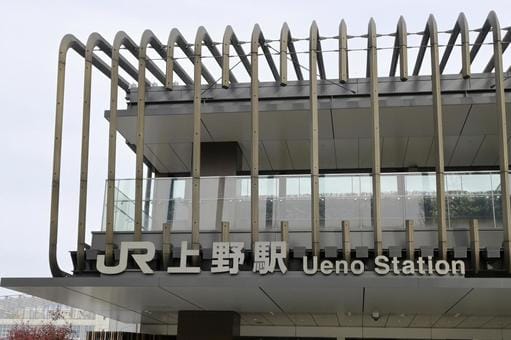
Access to Ueno is very convenient from major areas in Tokyo.
If using JR lines, the Yamanote Line, Keihin-Tohoku Line, Utsunomiya Line, and Takasaki Line all stop at Ueno Station. Especially the Yamanote Line, which provides direct access from major Tokyo stations like Shibuya and Shinjuku, is very convenient for tourists.
Also, the Joban Line starts and terminates at Ueno Station, making access from the Chiba direction easy as well.
If using the subway, Tokyo Metro's Ginza Line and Hibiya Line stop at Ueno Station. The Ginza Line is convenient for access from the Asakusa and Ginza areas, while the Hibiya Line is convenient for access from the Roppongi and Ebisu areas.
I often enjoy shopping in Ginza and then head directly to Ueno on the Ginza Line.
Furthermore, access from Narita Airport and Haneda Airport is also good. Using the Keisei Electric Railway, you can directly access Keisei-Ueno Station from Narita Airport. From Haneda Airport, you can smoothly arrive in Ueno by transferring from the Tokyo Monorail to the Yamanote Line.
With this extensive transportation network, Ueno is an ideal base for sightseeing in Tokyo. I often recommend Ueno as a base to my friends visiting Tokyo. The reason is not only good access to major tourist spots but also because Ueno itself is an area rich in tourist resources.
Most tourist spots are within walking distance from Ueno Station. Ueno Park is right outside the station, with museums and art galleries concentrated around it. Ameyoko is also right next to the station. This convenient location is one of the major reasons why Ueno can be enjoyed in half a day.
Model Course 1: Interact with Nature and Animals in Ueno

Ueno is a special area that provides a place to interact with rich nature and animals amidst the hustle and bustle of the city. This course is an ideal half-day plan for nature and animal lovers.
I myself have experienced refreshing both mentally and physically by following this course in the midst of stressful city life.
Course Overview
This course starts from Ueno Zoo, then goes through Ueno Toshogu Shrine, Shinobazu Pond, and ends at Ameyoko. It takes about 4 hours, and the main mode of transportation is on foot.
I especially recommend this course during the cherry blossom season in spring and the autumn foliage season. The cherry blossoms in Ueno Park are one of the best spots in Tokyo, and their beauty is breathtaking. The autumn foliage is equally beautiful, with the entire park turning golden, creating an unforgettable sight.
Features of Each Spot
Ueno Zoo

Ueno Zoo is known as the oldest zoo in Japan, housing over 260 species of animals. When I first visited, I was overwhelmed by its scale and variety of species.
What was particularly impressive was being able to observe the popular giant pandas up close. The adorable appearance of the pandas makes both children and adults smile involuntarily.
Large animals like gorillas and lions are also well-represented, each kept in environments suited to their ecology.
The charm of Ueno Zoo lies not just in seeing animals, but also in learning about ecosystems and environmental protection.
The zoo is rich in explanations about the ecology of the animals and conservation activities, allowing visitors to learn while having fun. It's a place that can be thoroughly enjoyed not only by families with children but also by adults alone.
Website: https://www.tokyo-zoo.net/zoo/ueno/
Ueno Toshogu Shrine
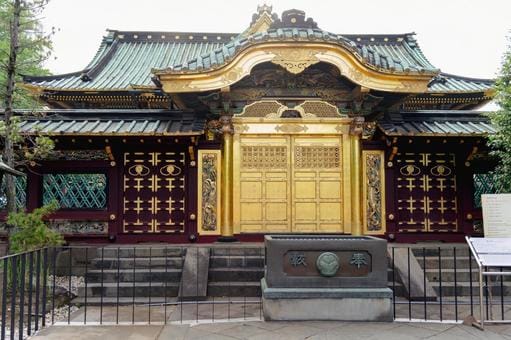
Ueno Toshogu Shrine is a shrine with a quiet presence in Ueno Park. When I first visited here, I was taken aback by its lavish and magnificent main hall.
The peony garden is also a highlight depending on the time of visit. Beautiful peony flowers bloom in January-February and April-May.
This place, where Tokyo's traditional culture and history are condensed in a quiet atmosphere, is ideal for calming your mind, a step away from the bustle of Ueno.
Visiting here after Ueno Zoo makes the contrast even more striking, resulting in a very interesting experience.
Website: https://www.uenotoshogu.com/en/
Shinobazu Pond
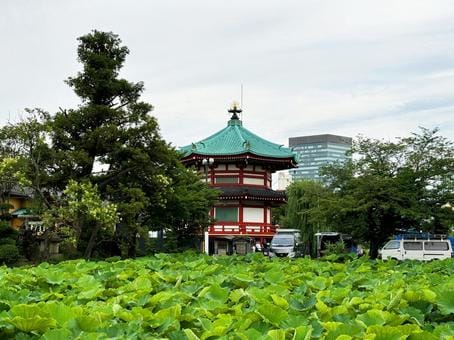
Shinobazu Pond is a vast pond in Ueno Park, one of the largest in Tokyo.
When I first visited here, I was surprised to find such a large body of water in the center of the city. Walking around the pond, you feel as if you're in nature, away from the hustle and bustle of the city.
I especially recommend taking a boat ride around the pond. I myself have experienced riding a boat with friends and enjoying the surrounding scenery.
The charm of Shinobazu Pond changes with the seasons.
In spring, the cherry blossoms around the pond are in full bloom, and their reflection on the water surface is spectacular. In summer, lotus flowers bloom beautifully, captivating visitors with their mystical appearance. In autumn, the fall foliage reflects on the water surface, and in winter, water birds fly in, showing different expressions in each season.
Ameyoko

Ameyoko is the perfect place to visit after a nature walk at Ueno Zoo and Shinobazu Pond.
Here, you can enjoy shopping and food hopping in a lively shopping street. I still vividly remember being overwhelmed by its energy and excitement when I first visited Ameyoko.
The charm of Ameyoko lies in its diversity. From American casual fashion items to ingredients from around the world, various products are crammed together.
Especially impressive is the selection of fresh fruits and seafood, which is so extensive that it's hard to choose. My favorite is buying seasonal fruits and eating them while walking around.
There's also a wide variety of street food. You can enjoy various tastes from Tokyo's standard light meals to cuisines from around the world.
Ameyoko is perfect for refreshing after touring Ueno's nature and cultural spots. Shopping and dining here provide a valuable opportunity to directly experience Tokyo's popular culture.
Website: https://www.ameyoko.net/
Model Course 2: Cultural and Artistic Tour of Ueno

Ueno is known as the center of culture and art in Tokyo. This course is especially recommended for art lovers and those interested in history.
Course Overview
This course starts from the Tokyo National Museum, then goes through the National Museum of Nature and Science, the National Museum of Western Art, and ends at Ameyoko. It takes about 5 hours and is mainly traveled on foot.
As these facilities are concentrated in Ueno Park, you can tour them efficiently.
I particularly like this course because you can gain knowledge and experience in a wide range of fields, from Tokyo's traditional culture to cutting-edge science and Western art, all at once.
Another attraction is that you can enjoy the nature of Ueno Park while walking between the facilities.
This course can be enjoyed throughout the year, but I especially recommend it during the cherry blossom season in spring and the autumn foliage season. The cherry blossoms and autumn leaves in Ueno Park are breathtakingly beautiful, and you can enjoy the beauty of the seasons between visiting cultural facilities.
Features of Each Spot
Tokyo National Museum
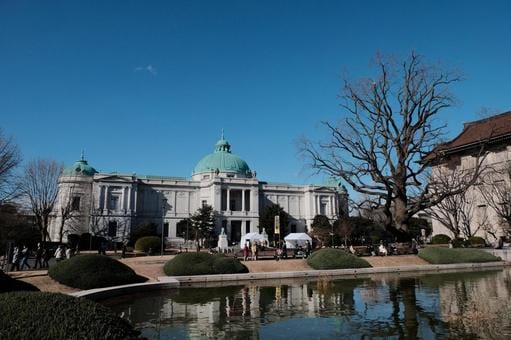
The Tokyo National Museum is Japan's oldest national museum and a treasure trove of Japanese and Oriental cultural properties. When I first visited here, I was overwhelmed by its scale and the quality of its collections.
It consists of multiple buildings including the Honkan (Japanese Gallery), Toyokan (Asian Gallery), and Heiseikan, each offering unique exhibitions.
What was particularly impressive was the national treasure "The Tale of Genji Scroll." I was so captivated by the delicate brushwork and vivid colors depicting the world of Heian period aristocrats that I lost track of time.
There's also a Japanese garden on the premises, allowing you to enjoy traditional Japanese garden beauty between exhibitions.
What's great for foreign tourists is that English audio guides are available. This allows for a deeper understanding of Tokyo's culture and history. Also, special exhibitions are held regularly, so there are always new discoveries even if you visit multiple times.
Website: https://www.tnm.jp/?lang=en
National Museum of Nature and Science
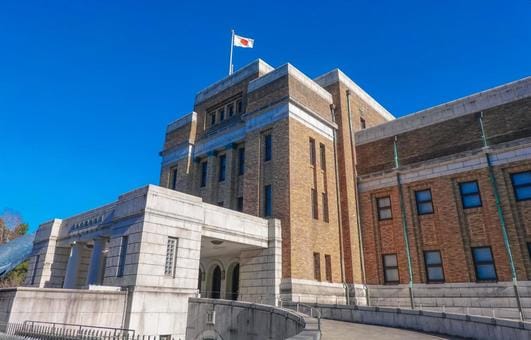
The National Museum of Nature and Science is Japan's largest comprehensive science museum.
When I first visited here, I was amazed by the scale and quality of its exhibits. What was particularly impressive was the dinosaur skeleton specimen that exudes an overwhelming presence. I felt a sense of excitement that revived the fascination I had for dinosaurs as a child.
The charm of this museum lies in the fact that there are many hands-on exhibits, not just things to look at. Through these experiences, you can feel science more closely.
Another notable point is that the exhibit composition can be enjoyed by both children and adults. From easy-to-understand explanations for children to specialized content, it covers a wide range, so families with children and adults alone can thoroughly enjoy it.
By visiting this museum during your cultural tour of Ueno, you can understand Tokyo's culture not only from an artistic perspective but also from a scientific one.
Website: https://www.kahaku.go.jp/english/
National Museum of Western Art
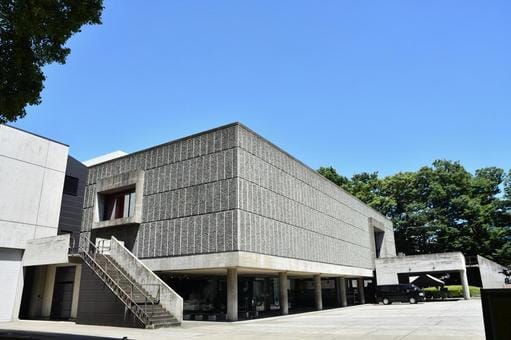
The National Museum of Western Art is a treasure trove of Western art located in Ueno Park.
What was particularly impressive when I visited was the main building itself.
Designed by Le Corbusier, a master of modern architecture, this building was registered as a World Heritage site in 2016. Its innovative design and functionality can truly be called a masterpiece of architectural art.
Inside the museum, the collection of Impressionist paintings is extensive. When I actually saw famous paintings by Monet, Renoir, and Van Gogh, which I had only seen in textbooks before, I was overwhelmed by the vividness of the colors and the power of the brushstrokes.
The National Museum of Western Art is a precious place where you can experience the essence of Western art while in Tokyo. Being able to compare Japanese and Western art during your cultural tour of Ueno will be a very interesting experience.
Website: https://www.nmwa.go.jp/en/
Ameyoko
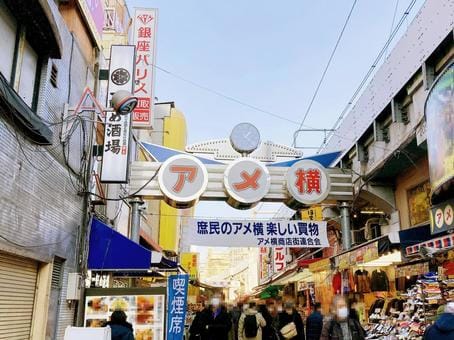
Ameyoko is the perfect place for refreshment after art appreciation. I always enjoy a pleasant change of mood by experiencing the lively atmosphere here after touring museums and art galleries.
The charm of Ameyoko lies in its unique atmosphere. The shops crammed into narrow streets, the energetic calls of shopkeepers, and the bustle of many people are truly symbolic of Tokyo's downtown.
Street food is essential when enjoying Ameyoko. You can easily enjoy the tastes of Tokyo's common people, such as yakitori and takoyaki.
Time spent in Ameyoko provides a vibrant experience in contrast to the quiet, meditative time spent in museums and art galleries.
I believe this contrast is the point where you can feel the charm of Ueno to the fullest.
Website: https://www.ameyoko.net/
Model Course 3: Experience the Ueno Area and Old Tokyo Streets
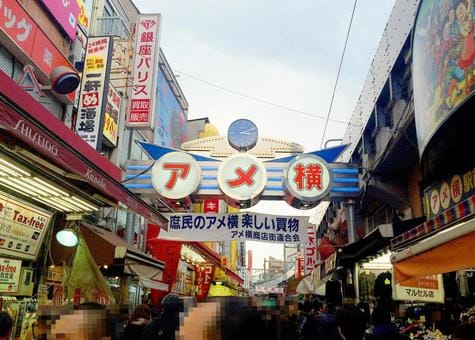
This course is centered around the Ueno area and is designed to enjoy the old townscape and traditional atmosphere of Tokyo.
Course Overview
This course starts from Ameyoko, passes through Yanaka Ginza, and ends at Nezu Shrine. It takes about 3 hours and is mainly traveled on foot.
While it's possible to cover everything on foot, there's also the option of taking a train to Yanaka Ginza.
This course can be enjoyed throughout the year, but personally, I recommend the autumn foliage season. The autumn leaves at Nezu Shrine, in particular, are exceptional, with the entire shrine grounds painted in red and yellow, a breathtakingly beautiful sight.
Features of Each Spot
Ameyoko
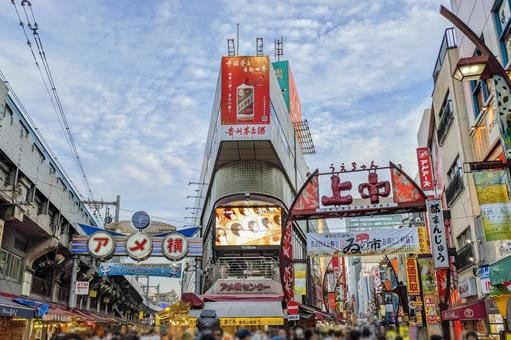
Ameyoko is a vibrant shopping street that has continued since the post-war period and is one of the symbolic places of Ueno. The shops crammed into narrow streets, the energetic calls, and the enthusiasm of people come together to create a unique atmosphere.
The charm of Ameyoko lies in its diversity. It's rich in fresh seafood, fruits, and dried foods, giving it a market-like vibrancy.
There are also many restaurants and food stalls offering multinational cuisine, allowing you to enjoy tastes from around the world. This diversity feels like a microcosm of Tokyo as a city.
There are also many shops dealing with American casual items, which are popular especially among young people.
Ameyoko is one of the places where you can experience the atmosphere of Tokyo's downtown most intensely. The experience here gives you a unique charm where modern Tokyo and the traditional shopping street culture are fused.
As the starting point of this course, the vibrancy of Ameyoko contrasts with the quiet townscape that follows, leading to a deeper understanding of Tokyo.
Website: https://www.ameyoko.net/
Yanaka Ginza
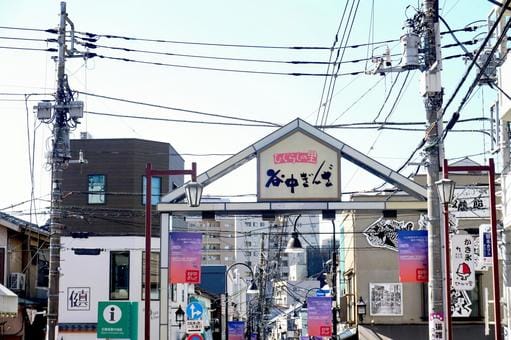
Yanaka Ginza is a shopping street full of downtown atmosphere, about a 20-minute walk from Ueno Station or a few minutes' walk from JR Nippori Station. It's a place where time flows leisurely, in contrast to the hustle and bustle of Ameyoko.
The charm of this shopping street lies in its retro atmosphere, with traditional Japanese confectionery shops and folk craft stores lined up. My favorite is the long-established rice cracker shop. The fragrant smell of freshly baked rice crackers often tempts me to stop by.
There are also many shops dealing with handmade goods and retro toys, which are fun just to look around.
The "Yuyake Dandan" (Sunset Steps), famous as a symbol of Yanaka Ginza, is a must-see spot.
The view of the sunset from here is spectacular, especially at dusk when the contrast between the Tokyo cityscape and the sunset is beautiful, making you sigh in admiration.
This area is also known as the "Cat Town." It's especially recommended for cat lovers, and there are many shops dealing with cat-related goods. I myself once bought a cute hand towel with a cat design here.
Visiting here after experiencing the vibrancy of Ameyoko will allow you to understand Tokyo's downtown more deeply.
Website: https://www.yanakaginza.com/
Nezu Shrine
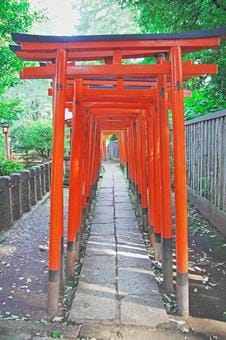
Nezu Shrine is one of the most historical shrines in Tokyo, located about a 15-minute walk from Yanaka Ginza.
The vermilion torii gates and the main shrine are symbolic landscapes of Nezu Shrine. Especially, the "Senbon Torii" (Thousand Torii Gates) where vermilion torii gates line up is a popular photo spot.
Nezu Shrine is one of the places where you can feel the history and tradition of Tokyo most intensely. Spending quiet time at this shrine after enjoying the vibrancy of Ameyoko and the nostalgic atmosphere of Yanaka Ginza should be a valuable experience to feel the diversity of Tokyo.
Website: https://nedujinja.or.jp/
Recommended Spots in and Around Ueno After Your Half-Day Trip
The Ueno area is so attractive that many people feel half a day is not enough.
So, if you have extra time, I recommend visiting the following spots as well.
Kaneiji Temple
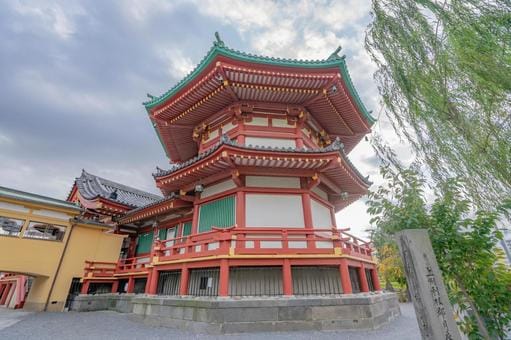
Kaneiji Temple is one of Tokyo's largest temples, adjacent to Ueno Park. When I first visited here, I was overwhelmed by its grandeur and serene atmosphere.
In fact, many of the current Ueno cultural facilities are built on the former grounds of Kaneiji Temple. Knowing this fact helps you understand the historical background of Ueno's cultural richness.
As it's a very vast site, I recommend taking your time to enjoy Tokyo's history.
Website: https://kaneiji.jp/
Yushima Tenjiman Shrine
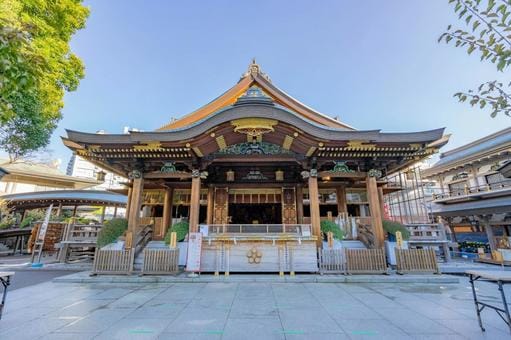
Yushima Tenjin Shrine is famous as a shrine dedicated to Sugawara no Michizane, the god of learning. It's located about a 20-minute walk from Ueno Station, and its quiet appearance is impressive.
I first visited here during my university entrance exam period, and I still vividly remember the solemn atmosphere from that time.
The main feature of this shrine is that it's widely known as a spot for students to pray for success in exams. Especially during the exam season, it's bustling with many students and their families.
Yushima Tenjin Shrine is also famous as a plum blossom viewing spot. The "Plum Festival" is held every year from mid-February to early March, and about 200 plum trees bloom beautifully. I look forward to visiting during this season every year, and it's a special experience to stroll around the shrine grounds surrounded by the fragrance of plum blossoms.
Website: https://www.yushimatenjin.or.jp/pc/index.htm
Akihabara
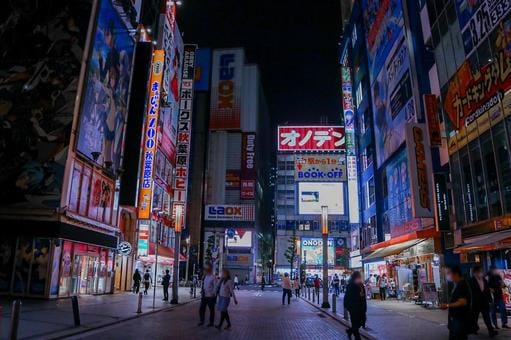
Akihabara is the center of Tokyo and Japan's pop culture, located just a 5-minute train ride or about a 20-minute walk from Ueno.
The biggest attraction of Akihabara is its aspect as a shopping spot for the latest gadgets and anime goods.
From large electronics stores to small specialty shops, all kinds of electronic devices and related products are gathered here. As a gadget lover myself, I get excited just walking through stores lined with new products.
There are also many shops dealing with anime and manga goods, allowing you to experience Japanese pop culture firsthand.
As a unique Akihabara experience, maid cafes are a must. I once visited out of curiosity, and the unique atmosphere and service were truly something that can only be experienced in Tokyo.
There are also many themed cafes that recreate the worlds of anime and games, offering dream-like spaces for fans.
Website: https://akiba.or.jp/
Asakusa
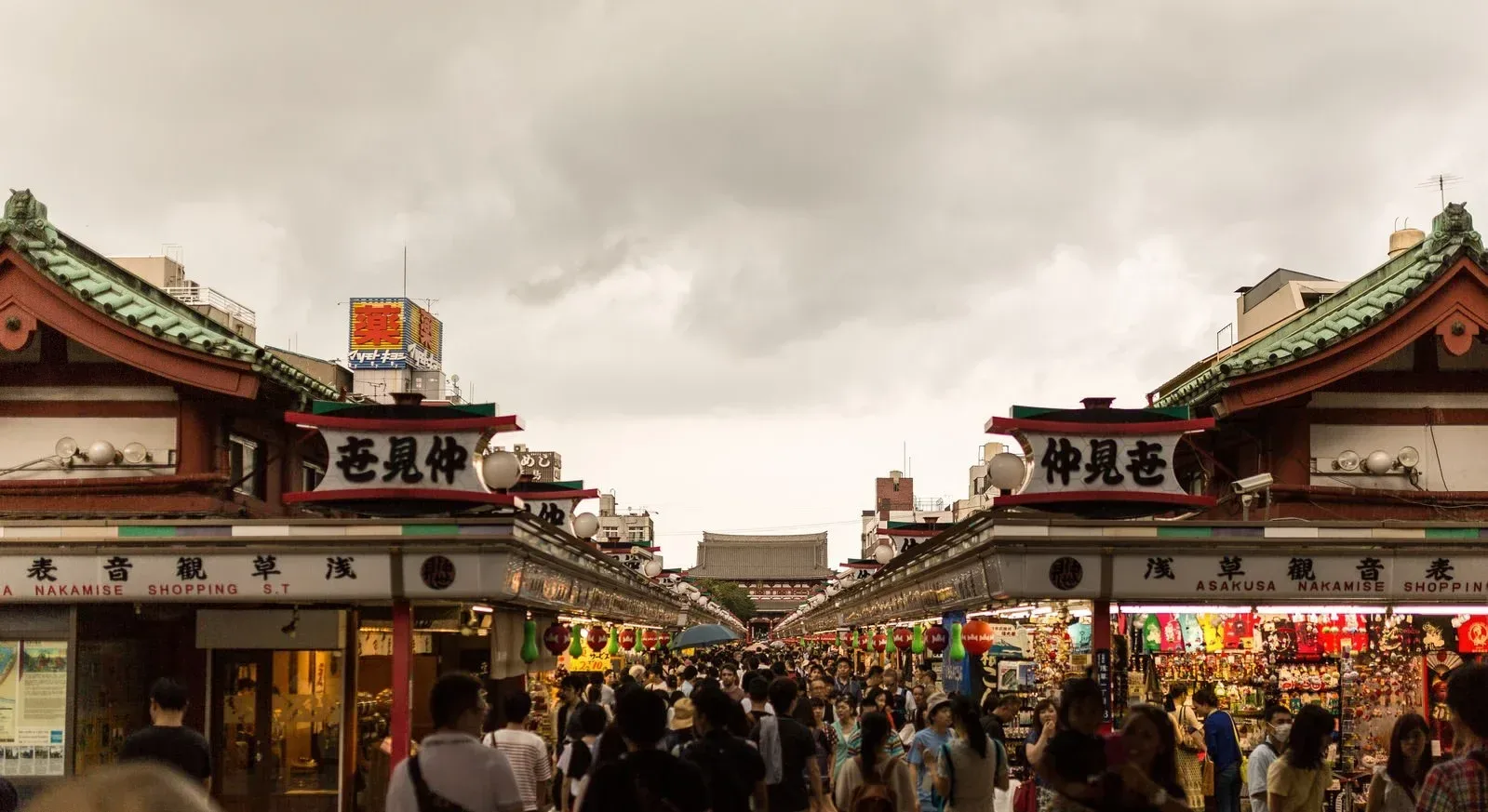
Asakusa is one of Tokyo's representative tourist spots, located just about a 10-minute train ride from Ueno.
Sensoji Temple, the center of Asakusa, is known as the oldest temple in Tokyo. After passing through the Kaminarimon gate with its eye-catching red lantern, the long approach called "Nakamise Street" continues.
This street is one of the oldest shopping streets in Japan, dating back to the Edo period, with about 90 shops lining up along about 250 meters.
I love buying traditional Japanese sweets and Asakusa's specialty "Ningyo Yaki" here. It's also fun to find souvenirs with Asakusa's stylish atmosphere.
When you reach the main hall of Sensoji Temple, you'll be overwhelmed by its magnificence. The large red lantern and giant straw sandals are impressive, and it's always crowded with many worshippers.
In Asakusa, there are also plenty of activities like rickshaws and yakatabune boats. Touring the streets of Asakusa on a rickshaw is a fresh experience.
Recommended Tours in Ueno
For those who want to enjoy the Ueno area more deeply and efficiently, I recommend guided tours.
"All-You-Can-Drink Bar Hopping Tour in Ueno" by Magical Trip
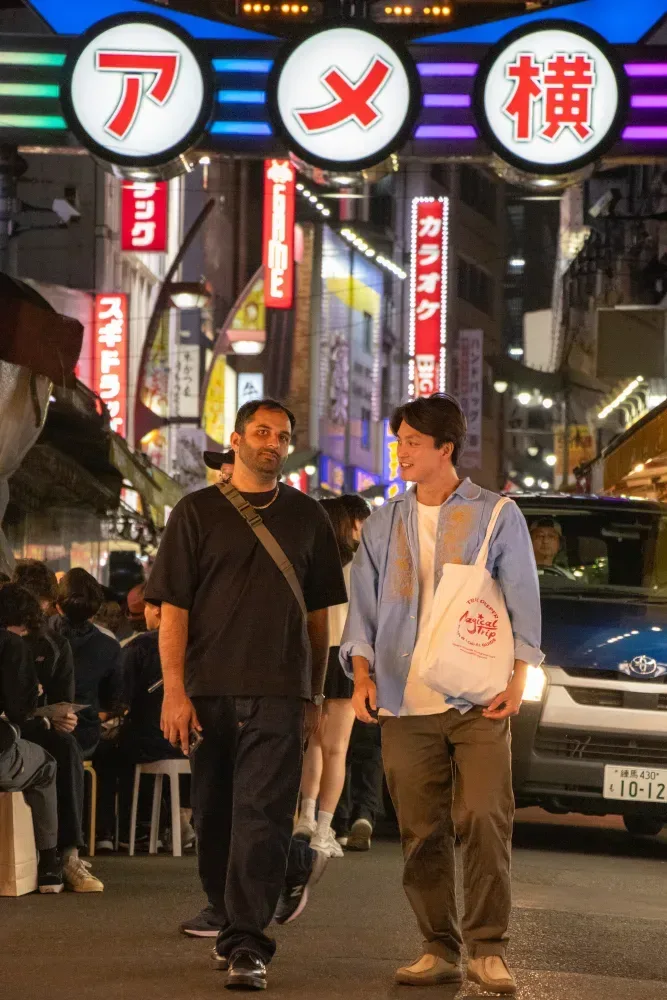
This tour is a night bar hopping tour in Ueno offered by us at Magical Trip.
The charm of the tour is that drinks and meals are included. You can participate in the tour hands-free and tour hidden gem restaurants in Ueno with a local guide.
The tour lasts 3.5 hours and costs about 102 USD per person. It might seem a bit expensive, but considering that meals and drinks are included, I think it's reasonable. Also, as the guide is in English, even those who don't speak Japanese can participate with peace of mind.
I recommend using this tour after enjoying the itineraries introduced in this article. The flow of enjoying Ueno's culture and history during the day and then experiencing local food and drink culture at night is a great way to experience all the charms of Ueno.
Click here for more details: All-You-Can-Drink Bar Hopping Tour in Ueno
"Ueno & Tokyo National Museum Tour" by True Japan Tour
Source: True Japan Tour
This tour is a roughly 4-hour tour centering on Ueno Park, Tokyo National Museum, and Ameyoko. I think it's the perfect tour for those who want to efficiently enjoy the entire Ueno area.
The tour fee is about 6,000 yen per person, not including food and drink expenses. However, considering that you can tour the main spots of Ueno over a relatively long period of 4 hours, I think it's well worth it.
Also, as it's a small group tour, it's attractive that you can easily ask questions to the guide. I recommend it for those visiting Ueno for the first time or those who want to learn more deeply about Ueno's culture and history.
Click here for more details: Ueno & Tokyo National Museum Tour
In this article, I've introduced three model courses to enjoy the Ueno area, additional spots to enjoy, and recommended tours.
Ueno is a charming area where Tokyo's traditional culture and modern vibrancy are beautifully fused. The rich nature, world-class museums, downtown atmosphere, and vibrant shopping streets are surprisingly compact, which is Ueno's great charm.
Even in a limited time of half a day, you can fully experience Ueno's diverse charms by touring efficiently. However, if you have time to spare, I recommend taking a full day to leisurely enjoy Ueno.
Ueno is a place where you can make new discoveries every time you visit and never get bored no matter how many times you come. I hope you'll use this article as a reference to fully enjoy Ueno!
